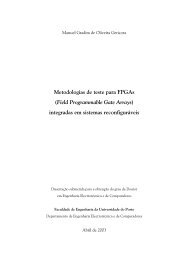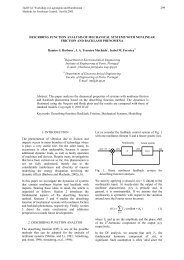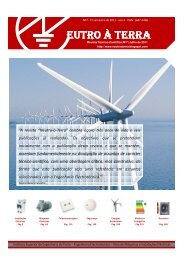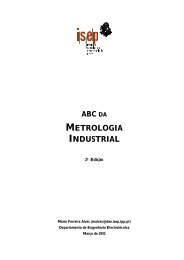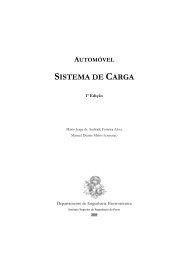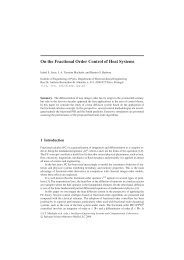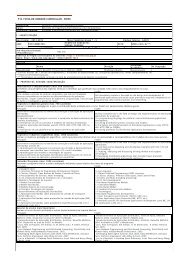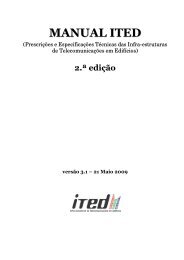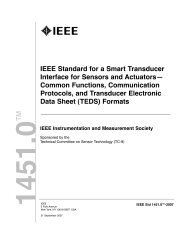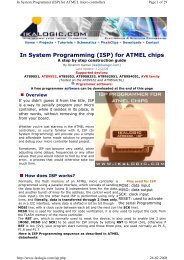AUTOMOTIVE ELECTRICAL CIRCUITS AND WIRING
AUTOMOTIVE ELECTRICAL CIRCUITS AND WIRING
AUTOMOTIVE ELECTRICAL CIRCUITS AND WIRING
You also want an ePaper? Increase the reach of your titles
YUMPU automatically turns print PDFs into web optimized ePapers that Google loves.
BATTERY CHARGING<br />
Under normal conditions, a hydrometer reading below 1.240 specific gravity at 80° F<br />
is a warning signal that the battery should be removed and charged. Except in<br />
extremely warm climates, never allow the specific gravity to drop below 1.225 in<br />
tropical climates. This reading indicates a fully charged battery.<br />
When a rundown battery is brought into the shop, you should recharge it immediately.<br />
There are several methods for charging batteries; only direct current is used with each<br />
method. If only alternating current is available, a rectifier or motor generator must be<br />
used to convert to direct current. The two principal methods of charging are (1)<br />
constant current and (2) constant voltage (constant potential).<br />
Constant current charging is be used on a single battery or a number of batteries in<br />
series. Constant voltage charging is used with batteries connected in parallel. (A<br />
parallel circuit has more than one path between the two source terminals; a series<br />
circuit is a one-path circuit). You should know both methods, although the latter is<br />
most often used.<br />
CONSTANT CURRENT CHARGING.- With the constant current method, the<br />
battery is connected to a charging device that supplies a steady flow of current. The<br />
charging device has a rectifier (a gas-filled bulb or a series of chemical disks); thus,<br />
the alternating current is changed into direct current. A rheostat (resistor for regulating<br />
current) of some kind is usually built into the charger so that you can adjust the<br />
amount of current flow to the battery. Once the rheostat is set, the amount of current<br />
remains constant. The usual charging rate is 1 amp per positive cell. Thus a 21-plate<br />
battery (which has 10 positive plates per cell) should have a charging rate no greater<br />
than 10 amps. When using this method of charging a battery, you should check the<br />
battery frequently, particularly near the end of the charging period. When the battery is<br />
gassing freely and the specific gravity remains constant for 2 hours, you can assume<br />
that the battery will take no more charge.<br />
The primary disadvantage of constant current charging is that THE CHARGING<br />
CURRENT REMAINS AT A STEADY VALUE UNLESS YOU CHANGE IT. A<br />
battery charged with too high current rate would overheat and damage the plates,<br />
making the battery useless. Do NOT allow the battery temperature to exceed 110°<br />
while charging.<br />
CONSTANT VOLTAGE CHARGING.- Constant voltage charging, also known as<br />
constant potential charging, is usually done with a motor generator set. The motor<br />
drives a generator (similar to a generator on a vehicle); this generator produces current<br />
to charge the battery. The voltage in this type of system is usually held constant. With<br />
a constant voltage, the charging rate to a low battery will be high. But as the battery<br />
approaches full charge, the opposing voltage of the battery goes up so it more strongly<br />
opposes the charging current. This opposition to the charging current indicates that a<br />
<strong>AUTOMOTIVE</strong> <strong>ELECTRICAL</strong> <strong>CIRCUITS</strong> <strong>AND</strong> <strong>WIRING</strong> 10/ 101



